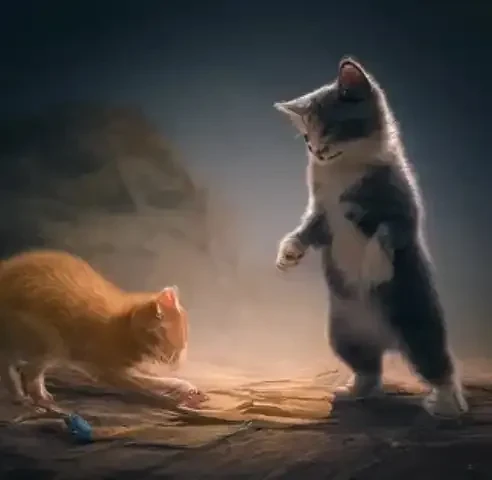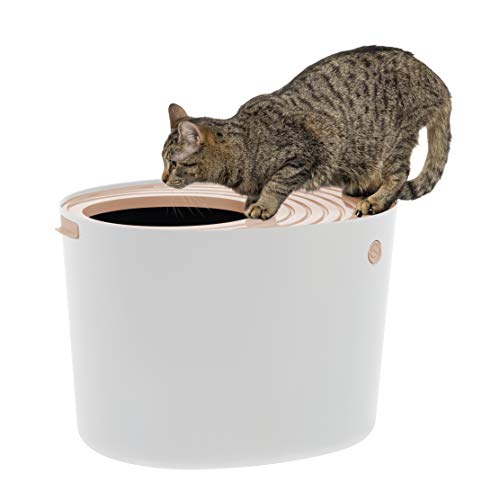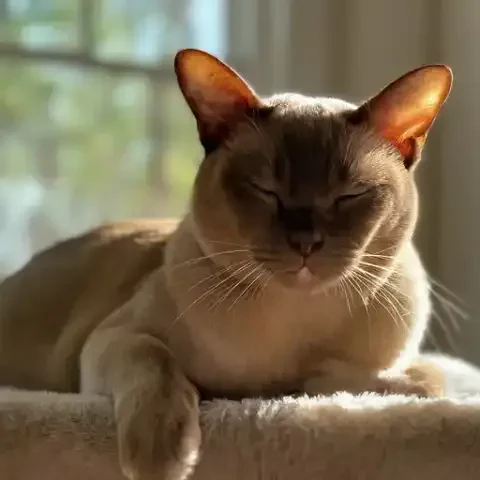Introduction
Understanding cat behavior is crucial for cat owners to foster a harmonious relationship with their feline companions. Cats, known for their independent nature, often display a range of behaviors that can sometimes be puzzling or challenging to interpret. By delving into the intricacies of feline behavior, owners can better comprehend their cats' needs and address any behavioral issues effectively
Significance of Understanding Cat Behavior
Cats communicate through their behavior, and deciphering these cues allows owners to meet their cats' physical and emotional requirements. Recognizing the reasons behind certain behaviors helps in creating a supportive environment conducive to a cat's well-being. Moreover, understanding cat behavior aids in the early identification of potential health issues or stressors, enabling timely intervention and prevention of more significant problems
Overview of Common Behavioral Issues
Cats may exhibit a variety of behavioral issues, ranging from aggression and inappropriate elimination to attention-seeking behaviors and anxiety-related problems. Each of these behaviors can stem from different triggers and require specific approaches for resolution. Familiarizing oneself with these common issues empowers cat owners to address them proactively and promote a positive living environment for both cat and owner
Purpose of the Article
This article aims to provide cat owners with comprehensive insights into typical behavioral issues exhibited by cats. By exploring the underlying causes and effective management strategies for these behaviors, readers will gain a deeper understanding of their feline companions and learn how to foster a supportive and fulfilling relationship. Through this knowledge, cat owners can navigate behavioral challenges with confidence and ensure the well-being of their beloved pets
The Nature of Feline Behavior
Understanding the behavior of cats requires insight into their inherent instincts, the influence of their environment, and how breed-specific characteristics contribute to their actions
Instinctual Behaviors
Cats possess a range of instinctual behaviors that have evolved over thousands of years. These instincts include hunting, territorial marking, grooming, and social interactions. Hunting instincts, for instance, drive cats to stalk and capture prey, even in domestic settings where food is readily available. Territorial marking, through scratching and scent marking, allows cats to establish and maintain their territory
Environmental Influences
The environment plays a significant role in shaping a cat's behavior. Factors such as the layout of the home, the presence of other pets, access to outdoor spaces, and the availability of resources like food, water, and litter boxes all influence a cat's behavior. Environmental enrichment, such as providing climbing structures, hiding spots, and interactive toys, can enhance a cat's mental and physical well-being, reducing stress and preventing behavioral issues
Breed-Specific Tendencies
Different cat breeds may exhibit distinct behavioral tendencies. For example, some breeds are known for their high energy levels and playful personalities, while others are more reserved or independent. Siamese cats, for instance, are known for their vocalizations and social nature, while Maine Coons are typically laid-back and affectionate. Understanding breed-specific traits can help owners anticipate certain behaviors and tailor their care and enrichment strategies accordingly
By recognizing the interplay between instinctual behaviors, environmental influences, and breed-specific tendencies, cat owners can gain valuable insights into their feline companions' behavior and provide them with the appropriate care and support they need to thrive
Common Behavioral Issues
Among the many behavioral challenges cat owners may encounter, aggression stands out as a significant concern. Understanding the types of aggression, their triggers, and effective management techniques is essential for fostering a safe and harmonious environment for both cats and their human companions
Aggression
Aggression in cats can manifest in various forms, each with its own set of triggers and manifestations
Types of Aggression
Territorial Aggression: Cats may exhibit aggressive behavior when defending their territory from perceived intruders, whether it's other cats, animals, or even humans encroaching on their space
Fear-Induced Aggression: Cats may become aggressive when they feel threatened or frightened. This type of aggression often occurs in response to unfamiliar situations, loud noises, or perceived threats
Play-Related Aggression: Sometimes, during play, cats may become overly aroused and exhibit aggressive behaviors such as biting, scratching, or pouncing. While not intended to cause harm, these behaviors can escalate if not appropriately managed
Triggers and Manifestations
Aggressive behavior in cats can be triggered by various factors, including perceived threats, resource guarding, social hierarchy conflicts, and past traumatic experiences. Manifestations of aggression may include hissing, growling, swatting, biting, and scratching. Understanding the specific triggers and body language cues displayed by the cat can help in identifying the root cause of the aggression
Management Techniques
Effective management of aggression in cats involves a multifaceted approach tailored to the specific type and underlying cause of the aggression. Some strategies for managing aggression include:
Environmental Modification: Creating a cat-friendly environment with ample resources, hiding spots, and vertical spaces can reduce territorial disputes and minimize stress
Behavioral Modification: Implementing positive reinforcement techniques to encourage desired behaviors and redirecting aggressive tendencies towards more appropriate outlets, such as interactive play and enrichment activities
Medical Evaluation: Rule out any underlying medical conditions that may contribute to aggressive behavior through a thorough veterinary examination
Desensitization and Counterconditioning: Gradually exposing the cat to the triggers of aggression while pairing them with positive experiences can help reduce fear-induced aggression over time
Professional Intervention: In cases of severe or persistent aggression, seeking guidance from a certified animal behaviorist or veterinarian with expertise in behavior can provide valuable insights and personalized management strategies
By addressing aggression proactively and implementing appropriate management techniques, cat owners can create a safe and nurturing environment conducive to positive behavior and strengthen the bond between themselves and their feline companions
Inappropriate Elimination
Inappropriate elimination, where a cat urinates or defecates outside of the litter box, is a common behavioral issue that can be frustrating for cat owners. Understanding the potential causes and implementing appropriate remedial actions is crucial for resolving this problem and maintaining a clean and hygienic living environment for both cats and their owners
Causes
Medical Issues: Medical conditions such as urinary tract infections, bladder stones, diabetes, and kidney disease can cause discomfort or pain during urination or defecation, leading to inappropriate elimination
Territorial Marking: Cats may urinate or defecate outside the litter box to mark their territory, particularly in multi-cat households or in response to perceived threats or changes in their environment
Stress and Anxiety: Environmental stressors such as changes in routine, new pets, household renovations, or loud noises can trigger stress and anxiety in cats, resulting in inappropriate elimination as a coping mechanism
Litter Box Problems
Several factors related to the litter box itself can contribute to inappropriate elimination behavior:
Location: The location of the litter box can influence a cat's willingness to use it. Cats prefer quiet, private areas away from high-traffic areas and food/water bowls
Litter Type: Cats may have preferences for certain types of litter, textures, or scents. Experimenting with different litter types can help determine the cat's preferences
Cleanliness: Cats are fastidious creatures and may avoid a dirty litter box. Regular scooping and thorough cleaning of the litter box are essential to ensure its attractiveness to the cat
Number of Boxes: In multi-cat households, inadequate access to litter boxes can lead to competition and territorial disputes. The general rule is to provide one litter box per cat plus one extra
Remedial Actions
Medical Evaluation: If inappropriate elimination suddenly occurs, a veterinary examination is necessary to rule out any underlying medical issues
Addressing Stressors: Identify and address potential stressors in the cat's environment, such as changes in routine or the introduction of new pets, to reduce anxiety and promote a sense of security
Litter Box Management: Ensure that litter boxes are clean, easily accessible, and located in suitable areas. Experiment with different litter types and box designs to find what works best for the cat
Behavior Modification: Encourage the use of the litter box through positive reinforcement techniques, such as praise and treats, when the cat uses it appropriately
Environmental Enrichment: Provide environmental enrichment, such as interactive toys, scratching posts, and vertical spaces, to alleviate boredom and reduce stress
By addressing the underlying causes of inappropriate elimination and implementing appropriate remedial actions, cat owners can effectively resolve this behavioral issue and maintain a harmonious relationship with their feline companions
Destructive Behavior
Destructive behavior in cats, such as scratching furniture, chewing on household items, or excessive grooming, can pose challenges for cat owners and result in damage to property. Understanding the reasons behind destructive behavior and implementing strategies to redirect these tendencies are essential for fostering a positive environment for both cats and their owners
Reasons
Territorial Marking: Scratching is a natural behavior for cats that serves several purposes, including marking territory with scent glands located in their paw pads. Cats may scratch furniture, walls, or other objects to assert their territory
Boredom: Cats require mental and physical stimulation to prevent boredom and engage in natural behaviors. Without adequate enrichment, cats may resort to destructive behaviors as a means of alleviating boredom and excess energy
Stress: Environmental stressors, such as changes in routine, new pets, or loud noises, can trigger anxiety and stress in cats. Destructive behavior may be a coping mechanism for cats experiencing heightened stress levels
Redirecting Destructive Tendencies
Provide Scratching Posts: Offering appropriate scratching outlets, such as scratching posts or pads, allows cats to engage in natural scratching behaviors without causing damage to furniture. Place scratching posts in areas where the cat frequently scratches to encourage their use
Environmental Enrichment: Provide interactive toys, puzzle feeders, and vertical spaces for climbing and exploration to keep cats mentally stimulated and physically active. Rotate toys regularly to prevent boredom and maintain interest
Positive Reinforcement: Use positive reinforcement techniques, such as praise and treats, to reward desirable behaviors, such as using scratching posts or engaging in play. Redirect the cat's attention away from destructive behaviors towards more appropriate outlets
Environmental Modification: Minimize stressors in the cat's environment by providing a predictable routine, creating safe hiding spots, and ensuring access to food, water, and litter boxes. Gradually introduce changes to the environment to reduce anxiety and promote a sense of security
Providing Appropriate Outlets
Scratching Posts: Offer a variety of scratching posts with different textures and orientations to cater to the cat's preferences. Place scratching posts near areas where the cat likes to scratch, such as furniture or door frames
Interactive Toys: Provide toys that mimic hunting behaviors, such as feather wands, laser pointers, or interactive puzzle feeders, to keep cats mentally engaged and physically active
Vertical Spaces: Install shelves, cat trees, or window perches to create vertical space for climbing, jumping, and observing their surroundings. Vertical spaces offer cats opportunities for exercise and enrichment
Playtime and Bonding: Spend quality time playing and interacting with your cat daily to strengthen the bond between you and provide an outlet for their energy and instincts
By understanding the reasons behind destructive behavior and providing appropriate outlets for natural behaviors, cat owners can effectively redirect their cats' tendencies and create a stimulating and enriching environment conducive to their well-being
Excessive Vocalization
Excessive vocalization, where a cat meows excessively and persistently, can be a source of concern for cat owners. Understanding the reasons behind this behavior and implementing coping strategies and training techniques are essential for managing excessive vocalization and promoting a peaceful coexistence between cats and their owners
Reasons
Attention-Seeking: Cats may meow excessively to gain attention from their owners, whether it's for food, play, or affection. They learn that meowing elicits a response and may continue the behavior to satisfy their needs
Anxiety: Cats experiencing anxiety or stress may vocalize excessively as a means of expressing their discomfort or seeking reassurance from their owners. Changes in the environment, such as moving to a new home or the introduction of a new pet, can trigger anxiety-related vocalization
Medical Issues: Excessive vocalization can also be a sign of underlying medical issues, such as hyperthyroidism, dental problems, or cognitive dysfunction. Cats may vocalize due to discomfort, pain, or confusion caused by these medical conditions
Coping Strategies
Identify Underlying Causes: Determine the underlying reason behind the cat's excessive vocalization through observation and, if necessary, consultation with a veterinarian. Addressing any medical issues or environmental stressors is crucial for effectively managing the behavior
Provide Enrichment: Offer environmental enrichment, such as interactive toys, scratching posts, and puzzle feeders, to keep the cat mentally stimulated and physically active. Engaging in regular play sessions with the cat can also help alleviate boredom and reduce excessive vocalization
Establish Routine: Establish a consistent daily routine for feeding, playtime, and interactions with the cat. Predictability and structure can help reduce anxiety and provide a sense of security for the cat
Ignore Attention-Seeking Behavior: Ignore the cat's vocalization when it is seeking attention for non-urgent matters, such as wanting to be fed or played with. Responding to the cat's demands reinforces the behavior and may lead to more frequent vocalization in the future
Training Techniques
Desensitization: Gradually expose the cat to situations that trigger excessive vocalization, such as leaving the house or encountering new people or pets, and reward calm behavior with treats and praise. Over time, the cat learns to associate these situations with positive experiences and becomes less vocal
Positive Reinforcement: Use positive reinforcement techniques, such as clicker training or treats, to reward quiet behavior and discourage excessive vocalization. Reinforce calm and quiet behavior with attention and rewards, while ignoring or redirecting vocalization
Behavior Modification: Address attention-seeking behavior by redirecting the cat's focus to more appropriate outlets, such as interactive toys or puzzle feeders. Teach the cat alternative behaviors, such as sitting quietly or performing tricks, to earn rewards and attention
By understanding the reasons behind excessive vocalization and implementing coping strategies and training techniques, cat owners can effectively manage this behavior and strengthen the bond with their feline companions. Consistency, patience, and positive reinforcement are key to addressing excessive vocalization and promoting a harmonious relationship between cats and their owners
Anxiety and Stress-related Behaviors
Anxiety and stress-related behaviors in cats can manifest in various ways and significantly impact their well-being. Recognizing the signs of anxiety, identifying common stressors, and implementing calming methods are essential for helping cats cope with stressful situations and promoting a sense of security and comfort
Signs of Anxiety
Excessive Vocalization: Cats may meow excessively or exhibit loud yowling when feeling anxious or stressed
Hiding: Anxious cats may seek hiding spots or retreat to secluded areas of the home to avoid perceived threats
Aggression: Some cats may become aggressive when feeling anxious, lashing out at other pets or even their owners
Urinary and Fecal Changes: Anxiety can lead to inappropriate elimination or changes in litter box habits, such as urinating outside the litter box or constipation
Decreased Appetite: Cats experiencing anxiety may have a reduced appetite or exhibit changes in eating habits
Excessive Grooming: Anxious cats may engage in excessive grooming behaviors, leading to hair loss or skin irritation
Common Stressors
Environmental Changes: Moving to a new home, rearranging furniture, or introducing new pets or family members can cause stress and anxiety in cats
Loud Noises: Thunderstorms, fireworks, or loud household noises can trigger fear and anxiety in cats
Routine Disruptions: Changes in the cat's routine, such as feeding times or litter box maintenance, can disrupt their sense of security and lead to stress
Conflict with Other Pets: Territorial disputes or aggressive interactions with other pets in the household can cause anxiety in cats
Medical Issues: Underlying medical conditions, such as urinary tract infections or gastrointestinal problems, can contribute to stress and anxiety in cats
Calming Methods
Provide Safe Spaces: Create quiet, secluded areas in the home where the cat can retreat when feeling anxious or stressed. Use cozy beds, blankets, or cat trees to provide comfort and security
Pheromone Therapy: Use synthetic pheromone products, such as Feliway diffusers or sprays, to mimic the calming pheromones produced by mother cats. These products can help reduce anxiety and promote relaxation in cats
Environmental Enrichment: Offer interactive toys, puzzle feeders, and scratching posts to keep cats mentally stimulated and physically active. Engaging in regular play sessions can help alleviate stress and anxiety
Routine and Predictability: Establish a consistent daily routine for feeding, playtime, and interactions with the cat. Predictability and structure can help reduce anxiety and provide a sense of security for the cat
Behavior Modification: Use positive reinforcement techniques to reward calm behavior and discourage anxious behaviors. Gradually expose the cat to stressful situations, such as loud noises or unfamiliar environments, and reward calm behavior with treats and praise
By recognizing the signs of anxiety, identifying common stressors, and implementing calming methods, cat owners can help their feline companions cope with stress and anxiety and promote a sense of calm and well-being. Creating a supportive environment and providing appropriate enrichment and comfort can help cats feel safe and secure in their surroundings
Attention-seeking Behavior
Attention-seeking behavior in cats is common and can range from vocalizing for attention to demanding physical contact from their owners. Understanding the causes and behaviors associated with attention-seeking, while also striking a balance between fulfilling the cat's need for attention and promoting independence, is crucial for fostering a healthy relationship between cats and their owners
Causes and Behaviors
Social Interaction: Cats are social animals and crave interaction with their owners. Attention-seeking behaviors may include rubbing against legs, vocalizing, or even pawing at their owner's hands or laps to solicit attention
Boredom: Cats may engage in attention-seeking behaviors as a means of alleviating boredom or seeking stimulation. Without adequate mental and physical enrichment, cats may resort to seeking attention from their owners to fulfill their need for interaction and engagement
Anxiety: In some cases, attention-seeking behaviors may stem from anxiety or insecurity. Cats experiencing stress or anxiety may seek comfort and reassurance from their owners through increased attention-seeking behaviors
Habitual Behavior: Attention-seeking behaviors can become habitual if reinforced by the owner's response. If a cat learns that certain behaviors, such as meowing or rubbing against their owner, result in attention or affection, they may continue to exhibit these behaviors regularly
Balancing Attention and Independence
Establish Routine: Establish a consistent daily routine for interacting with your cat to provide predictability and structure. Set aside dedicated time each day for play, cuddling, and bonding with your cat to meet their need for attention
Encourage Independence: Provide opportunities for your cat to engage in independent activities, such as exploring their environment, playing with toys, or lounging in comfortable spots around the home. Encourage self-sufficiency by providing access to food, water, and litter boxes in easily accessible locations
Positive Reinforcement: Reinforce desirable behaviors, such as independent play or calmly waiting for attention, with praise and treats. Redirect attention-seeking behaviors towards more appropriate outlets, such as interactive toys or scratching posts, and reward independent behavior
Gradual Changes: If your cat exhibits excessive attention-seeking behaviors, gradually reduce the amount of attention provided in response to these behaviors. Encourage the cat to engage in independent activities and reward calm behavior with attention and affection
Enrichment Activities
Interactive Toys: Offer a variety of interactive toys, such as wand toys, laser pointers, or puzzle feeders, to keep your cat mentally stimulated and physically active. Rotate toys regularly to maintain interest and prevent boredom
Vertical Space: Provide vertical spaces, such as cat trees, shelves, or window perches, for your cat to climb, jump, and observe their surroundings. Vertical space offers opportunities for exploration and enrichment
Scratching Posts: Offer multiple scratching posts or pads throughout your home to allow your cat to engage in natural scratching behaviors. Scratching posts provide an outlet for physical activity and help maintain healthy claws
Environmental Enrichment: Create a stimulating environment for your cat by introducing new toys, hiding treats or toys for your cat to discover, or setting up a secure outdoor enclosure for supervised outdoor exploration
By understanding the causes and behaviors associated with attention-seeking, while also promoting independence and providing enrichment activities, cat owners can strike a balance that meets their cat's need for attention and fosters a fulfilling and harmonious relationship. Encouraging independent behavior and providing opportunities for mental and physical stimulation can help prevent excessive attention-seeking behaviors and promote a happy and well-adjusted cat
Preventive Measures and Management
Preventing and effectively managing behavioral issues in cats requires a proactive approach that encompasses early socialization, creating cat-friendly environments, providing mental and physical stimulation, regular veterinary check-ups, and implementing behavior modification strategies tailored to the individual cat's needs
Early Socialization and Training
Positive Experiences: Expose kittens to various people, animals, and environments from an early age to promote positive socialization and reduce fear and anxiety in adulthood
Basic Training: Teach kittens basic behaviors, such as using the litter box, scratching posts, and coming when called, through positive reinforcement techniques. Reward desirable behaviors with treats and praise to reinforce learning
Creating Cat-Friendly Environments
Safe Spaces: Designate quiet, secluded areas in the home where cats can retreat and feel safe, particularly in multi-pet households or in homes with young children
Vertical Space: Provide vertical spaces, such as cat trees, shelves, or window perches, for cats to climb, jump, and observe their surroundings. Vertical space offers opportunities for exploration and escape
Environmental Enrichment: Offer a variety of interactive toys, scratching posts, puzzle feeders, and hiding spots to keep cats mentally stimulated and physically active. Rotate toys regularly to maintain interest and prevent boredom
Providing Mental and Physical Stimulation
Interactive Play: Engage in daily interactive play sessions with your cat to provide mental and physical stimulation. Use toys that mimic hunting behaviors, such as wand toys or laser pointers, to encourage natural behaviors
Food Puzzle Toys: Use food puzzle toys or interactive feeders to provide mental stimulation and encourage problem-solving skills. This can help alleviate boredom and prevent obesity in cats
Training and Trick Games: Teach your cat new tricks or behaviors, such as fetching or sitting on command, to provide mental stimulation and strengthen the bond between you and your cat
Regular Veterinary Check-ups
Preventive Healthcare: Schedule regular veterinary check-ups for your cat to monitor their overall health and address any medical issues promptly. Preventive healthcare, including vaccinations, parasite control, and dental care, is essential for maintaining your cat's well-being
Behavioral Evaluation: Discuss any behavioral concerns or changes in your cat's behavior with your veterinarian during routine check-ups. They can help identify underlying medical issues or behavioral problems and provide guidance on management and treatment options
Behavior Modification Strategies
Positive Reinforcement: Use positive reinforcement techniques, such as treats, praise, and clicker training, to encourage desired behaviors and discourage unwanted behaviors. Rewarding desirable behaviors strengthens the bond between you and your cat and promotes learning
Consistency and Patience: Be consistent in your training efforts and patient with your cat's progress. Behavior modification takes time and effort, but consistency and patience yield positive results
Seek Professional Help: If you're struggling to manage your cat's behavior on your own, consider seeking guidance from a certified animal behaviorist or veterinarian with expertise in behavior. They can provide personalized assessment and behavior modification plans tailored to your cat's needs
By implementing preventive measures such as early socialization and training, creating cat-friendly environments, providing mental and physical stimulation, scheduling regular veterinary check-ups, and utilizing behavior modification strategies, cat owners can promote a happy, healthy, and well-adjusted cat. Consistency, patience, and positive reinforcement are key to preventing and managing behavioral issues and fostering a strong bond between you and your feline companion
Conclusion
Understanding and effectively managing feline behavioral issues are essential aspects of responsible cat ownership. By recognizing common behavioral issues, taking proactive measures to address them, and seeking professional guidance when needed, cat owners can foster a positive and enriching relationship with their feline companions
Recap of Common Feline Behavioral Issues
Throughout this article, we have explored various common behavioral issues exhibited by cats, including aggression, inappropriate elimination, destructive behavior, excessive vocalization, anxiety-related behaviors, and attention-seeking behavior. Understanding the underlying causes and manifestations of these behaviors is crucial for implementing effective management strategies
Importance of Proactive Management
Proactive management of feline behavioral issues is vital for promoting the well-being of both cats and their owners. By identifying potential triggers, providing appropriate outlets for natural behaviors, and implementing preventive measures, cat owners can create a supportive environment conducive to positive behavior and mental health
Encouragement for Seeking Professional Advice
In cases where behavioral issues persist despite proactive management efforts, seeking professional advice from a certified animal behaviorist or veterinarian with expertise in behavior is highly recommended. These professionals can conduct a thorough assessment of the cat's behavior, identify underlying causes, and develop personalized behavior modification plans tailored to the individual cat's needs
Emphasizing the Nurturing of a Positive Human-Feline Relationship Through Understanding and Care
Ultimately, nurturing a positive relationship between humans and cats requires patience, understanding, and care. By taking the time to understand their cat's behavior, addressing their needs, and providing a loving and supportive environment, cat owners can forge a deep and meaningful bond with their feline companions. Through mutual respect, trust, and companionship, humans and cats can enjoy a fulfilling and harmonious relationship for years to come
In conclusion, proactive management, professional guidance when needed, and the nurturing of a positive human-feline relationship are essential elements in promoting the well-being and happiness of both cats and their owners. By working together with understanding and care, we can create a loving and enriching environment where cats can thrive and flourish as valued members of the family







